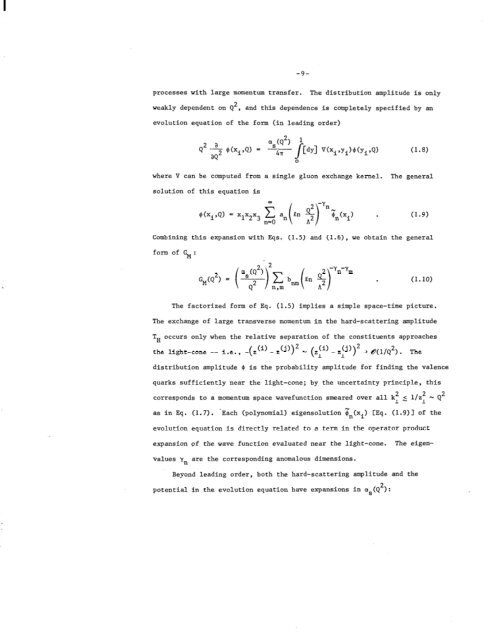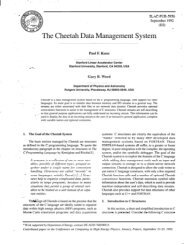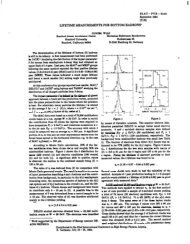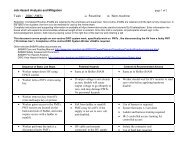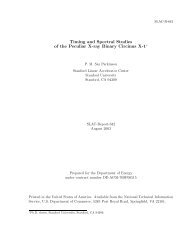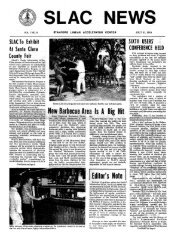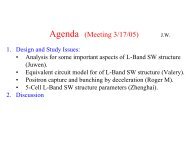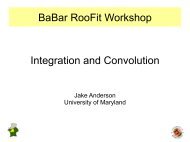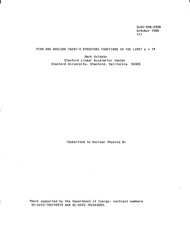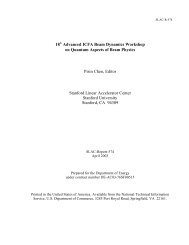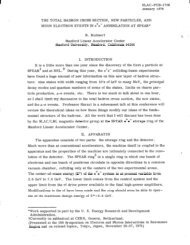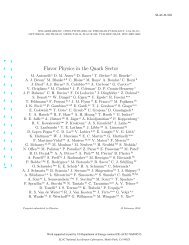slac-pub-2605 - SLAC - Stanford University
slac-pub-2605 - SLAC - Stanford University
slac-pub-2605 - SLAC - Stanford University
You also want an ePaper? Increase the reach of your titles
YUMPU automatically turns print PDFs into web optimized ePapers that Google loves.
-9-<br />
processes with large momentum transfer. The distribution amplitude is only<br />
weakly dependent on Q2, and this dependence is completely specified by an<br />
evolution equation of the form (in leading order)<br />
a (Q2) 1<br />
Q2 a $$,Q) = +-<br />
aQ2<br />
s<br />
0<br />
CRY] V(Xi’Yi)~(Yi,Q)<br />
(1.8)<br />
where V can be computed from a single gluon exchange kernel. The general<br />
solution of this equation is<br />
. (1.9)<br />
Combining this expansion with Eqs. (1.5) and (1.6), we obtain the general<br />
form of GM:<br />
GM(Q2) = (Frg b_(ln $)‘"ym . (1.10)<br />
The factorized form of Eq. (1.5) implies a simple space-time picture.<br />
The exchange of large transverse momentum in the hard-scattering amplitude<br />
T, occurs only when the relative separation of the constituents approaches<br />
the light-cone -- i.e., -(z(i) _ z(j))2 - (zii' _ zJj))2 +. @(l/Q2). The<br />
distribution amplitude $ is the probability amplitude for finding the valence<br />
quarks sufficiently near the light-cone; by the uncertainty principle, this<br />
corresponds to a momentum space wavefunction smeared over all kf 5 l/z: w Q2<br />
as in Eq. (1.7). -Each (polynomial) eigensolution Tn(xi) [Eq. (1.9) 1 of the<br />
evolution equation is directly related to a term in the operator product<br />
expansion of the wave function evaluated near the light-cone. The eigen-<br />
values yn are the corresponding anomalous dimensions.<br />
Beyond leading order, both the hard-scattering amplitude and the<br />
potential in the evolution equation have expansions in as(Q2):


